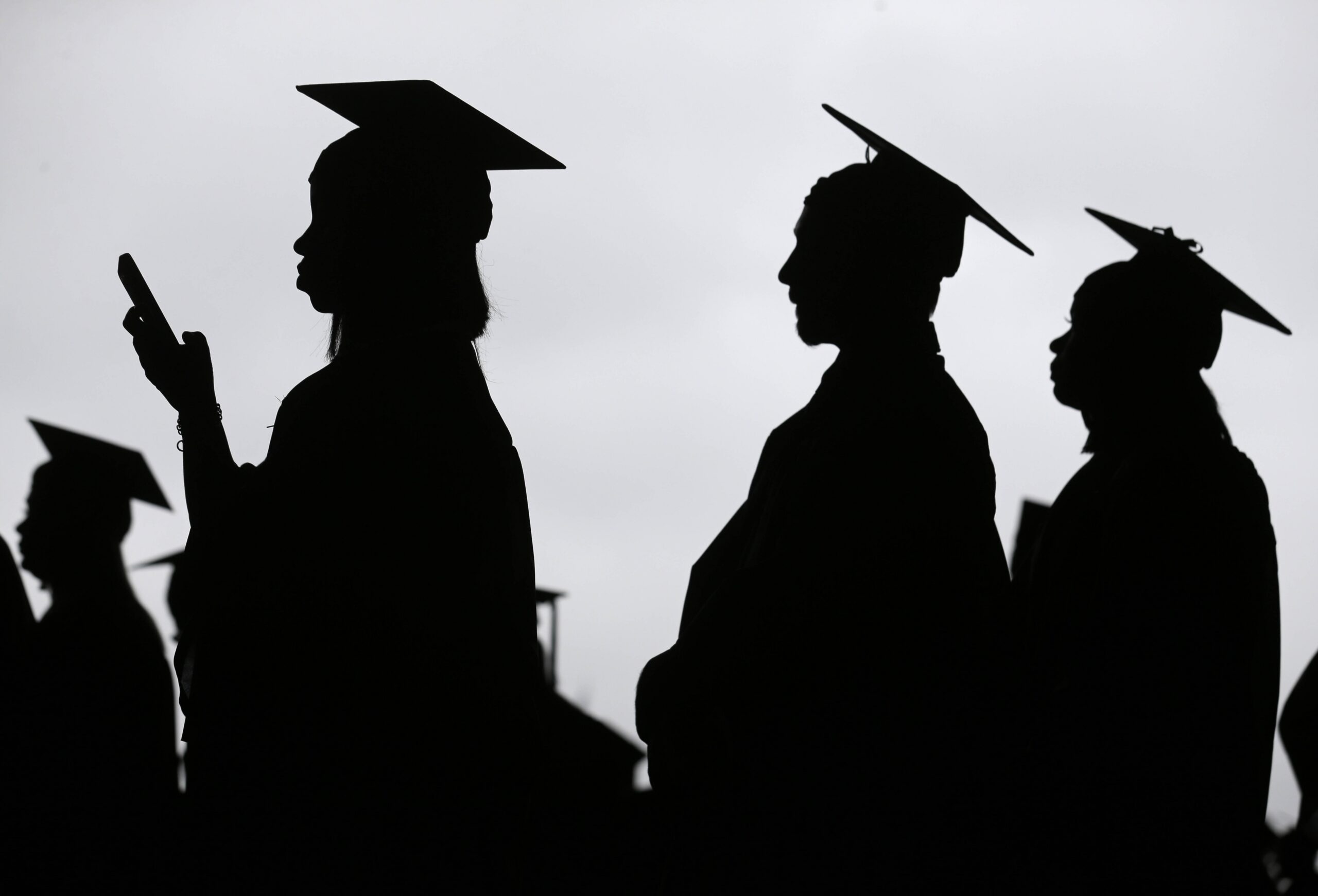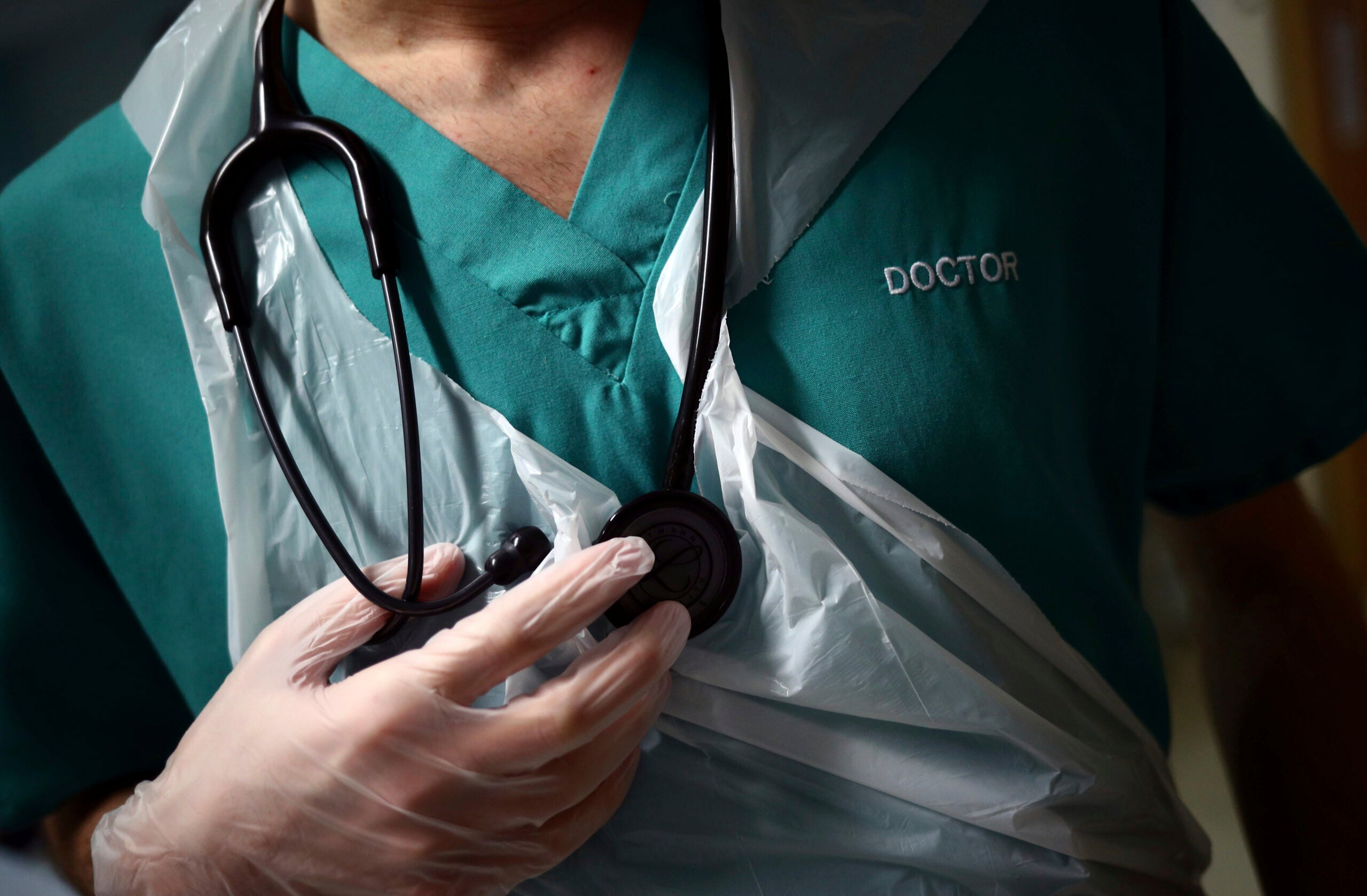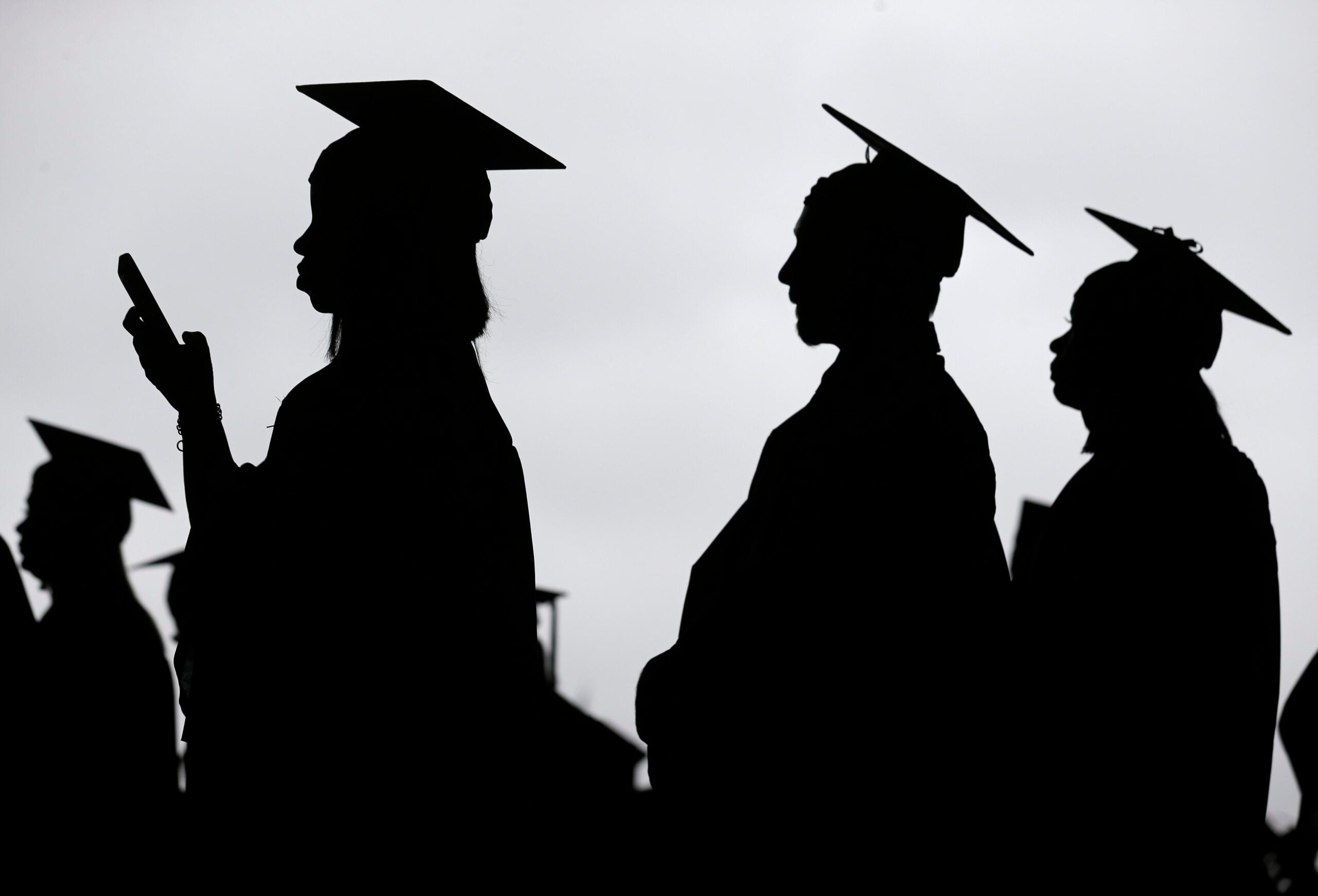Around half of Wisconsin residents with federal student loan debt could see their balances greatly reduced or wiped clean under President Joe Biden’s debt forgiveness, according to data from the U.S. Department of Education.
On Wednesday, Biden announced his administration plans to cancel up to $10,000 in federal student loan debt for individuals making less than $125,000 per year and for borrowers with family income under $250,000.
For those who received need-based Pell Grants in college, up to $20,000 in loans could be canceled if they fall under the same income caps.
News with a little more humanity
WPR’s “Wisconsin Today” newsletter keeps you connected to the state you love without feeling overwhelmed. No paywall. No agenda. No corporate filter.
Not all student loans qualify for cancelation under the Biden plan, though. Those who borrowed from private lenders will get no relief, nor will borrowers who received federal loans financed by banks and nonprofit lenders under the Federal Family Education Loan program prior to 2010. The Department of Education has said FFELP borrowers will be able to consolidate the older loans under its Direct Loan Program to become eligible for forgiveness.
Federal data compiled by the Student Success Through Applied Research lab at UW-Madison shows 715,800 Wisconsin residents carried a total of $23.1 billion in student loan debt in the first quarter of 2021 for an average of $32,230 per borrower.
When broken down further, 52 percent of federal borrowers had $20,000 or less of outstanding debt. Those who owe between $20,000 and $40,000 accounted for 23 percent of all borrowers.
At the same time, a small share of people held a large share of the overall student loan debt in Wisconsin. As of the spring of 2021, six percent of borrowers had outstanding balances of between $100,000 and more than $200,000. In other words, around 39,600 people owed the federal government more than $7 billion for their education, according to the SSTAR Lab.
As a result, UW-Madison Professor and SSTAR Lab Director Nick Hillman told WPR, Biden’s debt cancelation will have very different effects across the spectrum of borrowers.
“On the low end, you have a whole lot of borrowers who have pretty small loans, and they’re going to have debts cleared off,” said Hillman. “And then on the opposite end, you have kind of a small handful of borrowers who have really big debt and $10,000 is going to barely even make a dent.”
The SSTAR lab also looked at the distribution of student loan debt across Wisconsin. They found the Milwaukee, Waukesha and West Allis metro region had the highest concentration of outstanding debt, with an average of around $19,500 as of 2018. The Wausau metro area had the lowest average of around $14,500 that year.
Hillman said nationwide, college tuition and room and board fees have doubled since the 1990s. He said increases in Wisconsin have been tempered by the decade-long freeze on in-state, undergraduate tuition at state campuses.
“The UW system, for example, has kept the cap on tuition,” said Hillman. “The room and board, all the other non-tuition expenses keep rising, and median family incomes are definitely not keeping pace.”
According to the most recent data from the U.S. Department of Education’s National Center for Education Statistics, a higher percentage of students at private universities in Wisconsin take out federal loans than those at public universities.
At Lakeland University, a private school, 97 percent of incoming freshmen took out federal loans, according to NCES data. That was the highest percentage among all institutions in the state. Marian University was next, with 92 percent of incoming freshman taking out federal loans during the 2020-2021 school year.
The portion of incoming freshmen at UW System Schools taking out federal loans were far lower. UW-Stout had the largest portion of freshman borrowing from federal government among state schools with 54 percent taking out loans. That was followed by UW-River Falls and UW-Whitewater, which each saw 53 percent of incoming freshmen accept federal loans.
Private and public universities also had notable differences in the proportions of incoming freshmen qualifying for the need-based federal Pell Grant.
Herzing University-Brookfield saw 84 percent of its 2020-2021 freshman getting Pell Grants. The College of the Menominee Nation had the second highest portion, with 77 percent of students qualifying for the Pell.
Among UW System schools, UW-Parkside had the highest share of incoming freshmen receiving Pell Grants, at just 34 percent. UW-Superior saw 34 percent of its 2020-2021 freshman receive the aid.
UW-La Crosse had the lowest share of freshmen receiving Pell Grants, 15 percent, followed by UW-Madison, which had 17 percent.
Wisconsin’s public technical colleges also had higher percentages of incoming freshman receiving Pell Grants during the 2020-2021 school year than state universities with Milwaukee Area Technical College topping the list with 58 percent of incoming students receiving the aid. Milwaukee Area Technical College also saw 58 percent of its freshman take out federal loans that year, per NCES data.
In an attempt to make state universities more affordable and boost enrollment, the UW System announced a tuition waiver proposal on August 15 called the Wisconsin Tuition Promise. It would cover remaining costs not paid by financial aid for students from families making less than $62,000. The initiative was part of the UW System’s two-year budget request.
“Kind of hidden in there, as part of their rationale for why they want to do this program, was that there aren’t enough low income students in the system, basically,” said Hillman. “And the system has become more represented by upper income students, and this trend has been persisting for years.”
On August 19, the UW System Associate Vice President for Policy Analysis and Research Ben Passmore gave a presentation on the affordability of an education at state universities to the UW Board of Regents. He said UW schools are more affordable than peer institutions, but they’re still not affordable for all potential students. Data from UW System Administration showed the proportion of freshman from families making more than $100,000 per year increased from 29 percent in 2011 to 46 percent during the 2020-2021 school year.
Ben Soman is the president of College Goal Wisconsin, a volunteer group of higher education leaders aimed at helping college students access federal and state financial aid. He is also a financial aid director at Marion University. He said he favors the president’s push to address federal student loan debt but said “history will end up deciding” whether the current plan is a good idea or not.
“The meteor just hit the ground and made impact,” said Soman. “But now all the dust is in the air, and we’re not sure exactly how everything is going to settle.”
In its Wednesday press release, the U.S. Department of Education hasn’t yet outlined how borrowers will apply for the debt cancelation. Applications are expected to be available by the end of the year.
Soman said while the cancelation of up to $10,000 in federal loan debt captured the headlines, the department’s announcement of a new income-driven loan repayment plan that lowers payments from 10 percent of a borrower’s income to 5 percent is equally big news.
Wisconsin Public Radio, © Copyright 2026, Board of Regents of the University of Wisconsin System and Wisconsin Educational Communications Board.





